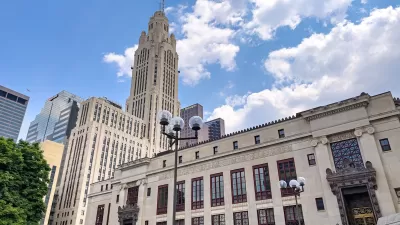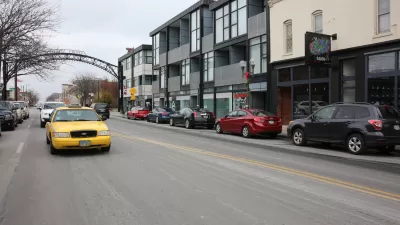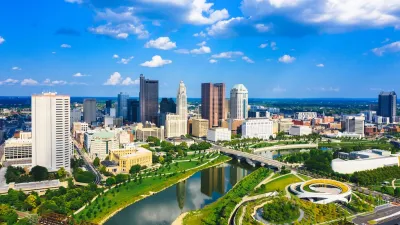A hospital in Columbus, Ohio, seeks to improve the lives of area residents by investing in the surrounding neighborhood.

Laura Bliss examines the relationships between hospitals and the communities in which they locate, with a focus on Nationwide Children’s Hospital in Columbus, Ohio. The Southern Orchards neighborhood around the hospital had been in decline for many years, and in 2008 Nationwide Children’s began investing in the community, starting with a real estate development initiative, reports Bliss:
Over the past nine years, Nationwide Children’s put $6 million into this combined effort, joining the city and other donors to [the] Healthy Neighborhoods, Healthy Families [initiative]; all told, what began as holding up its end of a tax deal became a nearly $23 million investment in 272 single-family homes and dozens of rental units around the South Side.
Bliss points out that Nationwide Children’s had incentives for investing in Southern Orchards. For one, an improved neighborhood is an employee benefit. In addition, improving the quality of life and health of area residents helps the hospital. Since it is reimbursed for each Medicaid and Medicare patient, rather than for services provided, healthier patients mean lower medical costs for the hospital.
However, the actual effects and outcomes of these investments remain somewhat unclear, reports Bliss. One of Nationwide Children’s next goals is getting a better sense of how improvements in the neighborhood have affected the health of children. “Over the next three years, the hospital will try to assess this by a number of metrics, including readmission rates, the number of emergency room visits, inpatient days, and the particular health issues kids from the neighborhood are bringing in,” says Bliss.
Bliss also says that development investments by Nationwide Children’s and hospitals in other cities have seen their fair share of controversies. In some places, projects have moved too slowly or the promised community benefits never materialized. Concerns about gentrification and displacement have also challenged development efforts. Advocates and researchers say measuring displacement of residents, developing strategies to prevent it, and figuring out ways to reconnect with displaced people should be goals at the forefront of future investment activities.
FULL STORY: When a Hospital Plays Housing Developer

Study: Maui’s Plan to Convert Vacation Rentals to Long-Term Housing Could Cause Nearly $1 Billion Economic Loss
The plan would reduce visitor accommodation by 25,% resulting in 1,900 jobs lost.

North Texas Transit Leaders Tout Benefits of TOD for Growing Region
At a summit focused on transit-oriented development, policymakers discussed how North Texas’ expanded light rail system can serve as a tool for economic growth.

Why Should We Subsidize Public Transportation?
Many public transit agencies face financial stress due to rising costs, declining fare revenue, and declining subsidies. Transit advocates must provide a strong business case for increasing public transit funding.

How to Make US Trains Faster
Changes to boarding platforms and a switch to electric trains could improve U.S. passenger rail service without the added cost of high-speed rail.

Columbia’s Revitalized ‘Loop’ Is a Hub for Local Entrepreneurs
A focus on small businesses is helping a commercial corridor in Columbia, Missouri thrive.

Invasive Insect Threatens Minnesota’s Ash Forests
The Emerald Ash Borer is a rapidly spreading invasive pest threatening Minnesota’s ash trees, and homeowners are encouraged to plant diverse replacement species, avoid moving ash firewood, and monitor for signs of infestation.
Urban Design for Planners 1: Software Tools
This six-course series explores essential urban design concepts using open source software and equips planners with the tools they need to participate fully in the urban design process.
Planning for Universal Design
Learn the tools for implementing Universal Design in planning regulations.
Ascent Environmental
Borough of Carlisle
Institute for Housing and Urban Development Studies (IHS)
City of Grandview
Harvard GSD Executive Education
Toledo-Lucas County Plan Commissions
Salt Lake City
NYU Wagner Graduate School of Public Service





























